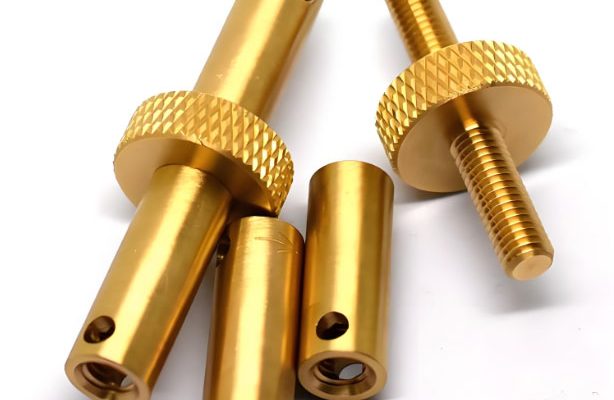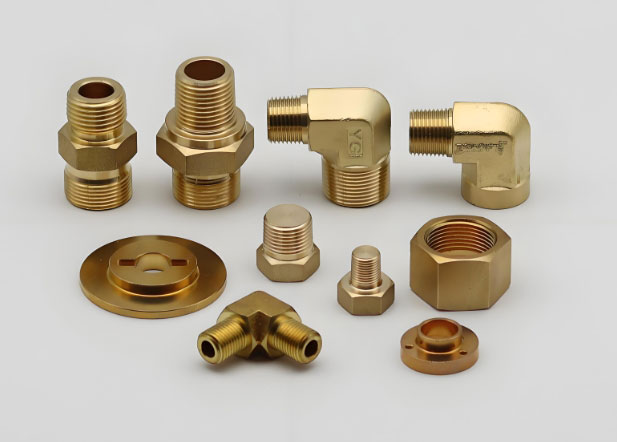Oxygen-free copper, as a high-purity, high-strength new type of metal material, has found widespread use in the field of component manufacturing in recent years. Its unique physical and chemical properties, such as high purity, high electrical conductivity, high strength, excellent corrosion resistance, and good machinability, make it an ideal material for manufacturing high-precision, high-performance components. This article will comprehensively explore the application of oxygen-free copper in component manufacturing, including its material properties, manufacturing processes, and specific areas of application.
1. Material Properties of Oxygen-Free Copper
As the name suggests, oxygen-free copper refers to copper material with very low or no oxygen content. According to standards, the oxygen content of oxygen-free copper is typically not more than 0.003%, with the total impurity content not exceeding 0.05%, and its purity reaching above 99.95%. This high-purity characteristic endows oxygen-free copper with numerous advantages:
High Strength and Hardness: Oxygen-free copper, through specialized manufacturing processes such as high-temperature and high-pressure treatment, achieves excellent mechanical properties that meet the demands for high-strength components.
Good Electrical and Thermal Conductivity: Due to its high purity, oxygen-free copper can effectively transmit electrical and thermal energy, making it suitable for applications with high electrical and thermal performance requirements.
Excellent Corrosion Resistance: The uniform single-phase structure of oxygen-free copper reduces the presence of impurities like copper oxide, thereby improving the material’s resistance to corrosion.
Good Machinability: Oxygen-free copper can be processed into complex-shaped components through various methods such as casting, extrusion, and stretching, meeting diverse design requirements.
2. Manufacturing Process of Oxygen-Free Copper
The manufacturing process of oxygen-free copper is complex and precise, involving several key steps:
Raw Material Selection: High-purity cathode copper is selected as the raw material to ensure the initial purity of the oxygen-free copper.
Deoxygenation Treatment: Through specialized deoxygenation processes, such as vacuum melting or induction furnace melting, oxygen and other impurities are removed from the copper, ensuring the purity of the oxygen-free copper.
Casting and Processing: A high-temperature and high-pressure process is used for casting, controlling the crystallization speed and microstructure of oxygen-free copper. Subsequently, processes like extrusion and stretching shape the material into the desired components.
This series of unique manufacturing processes not only ensures the high quality and good performance of oxygen-free copper but also makes it widely applicable in component manufacturing.
3. Applications of Oxygen-Free Copper in Component Manufacturing
Electronic Components:
In the electronics industry, oxygen-free copper is widely used to manufacture various electronic components such as integrated circuit lead frames, connectors, and printed circuit boards (PCBs), due to its excellent electrical conductivity and corrosion resistance. The high purity of oxygen-free copper ensures the stability and reliability of electronic components, enhancing overall product performance.
Mechanical Components:
With its high strength and good machinability, oxygen-free copper is an ideal material for manufacturing high-precision mechanical components. For example, oxygen-free copper can be used to make high-precision bearings, gears, and transmission devices, which perform excellently in high-speed operations and harsh environments, improving the overall performance and service life of mechanical equipment.
Aerospace Components:
In the aerospace field, oxygen-free copper is used to manufacture high-strength and high-thermal-conductivity components, thanks to its excellent properties. These components maintain stable performance under extreme working conditions, ensuring the safety and reliability of aerospace vehicles.
Other Fields:
In addition, oxygen-free copper is also widely used in energy, communication, and other sectors. In the energy field, its high conductivity and strength make it ideal for manufacturing high-conductivity, high-strength components. In the communications sector, oxygen-free copper is used to produce optical fiber cables and other communication devices, ensuring stable signal transmission.
4. Conclusion
Oxygen-free copper, with its unique physical and chemical properties, demonstrates vast potential for application in component manufacturing. Its high strength, high purity, excellent electrical conductivity, and corrosion resistance make it an ideal choice for producing high-precision, high-performance components. As science and technology continue to advance, the performance and applications of oxygen-free copper will expand and improve, bringing more innovation and development opportunities to the component manufacturing industry.


